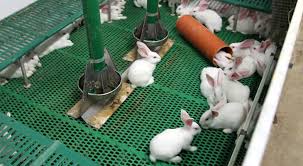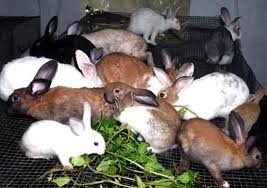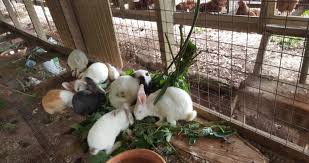Many skills are essential for the success of rabbit farming. Observation, examination, record keeping, hutch design, building and siting, food identification, selection, production and storage, and good management practices are all crucial components of a successful rabbit farming operation.
Read Also: Bedbugs: Description, Damages Caused, Control and Preventive Measures
A. Husbandry Skills for Successful Rabbit Farming

1. Observation Skills
Observation involves more than just looking it is about being mindful and attentive. This skill is crucial for all animal keepers and relies on having genuine curiosity and compassion for the rabbits. While it can be developed with practice, asking relevant questions each time the rabbits are checked can significantly enhance this ability.
Questions such as: “Is everything the same as the last time?” “Are the hutches in good condition?” “Is there food left?” “Are there any signs of blood?” “Is the fence wire secure?” and “Is there excessive hair in the hutch, indicating moulting?” can help identify any anomalies or problems.
These questions serve as a guide, but the goal is to ask as many as needed to assess the health and well-being of the rabbits.
2. Rabbit Examination and Health Check
Examination is necessary when a new rabbit is acquired or before selecting rabbits for breeding. Important checks include: Is the rabbit healthy? Does it have a tilted head? Is it isolating itself from other rabbits? Are there scabs or sores on the skin? Are the nostrils clear, or is there discharge? Are the faeces normal? Is there any sign of ear infections? Is the rabbit’s gait normal? How does its weight compare with its age?
3. Weighing Rabbits
Weighing is essential to monitor the growth and overall condition of rabbits. Two methods can be used: a pan-scale or a spring balance.
4. Nail Trimming
Rabbits’ nails require periodic trimming since rabbits housed in hutches do not naturally wear down their nails through burrowing or running. Overgrown nails can injure the rabbit or cause scratches to the keeper. Sharp scissors or human nail clippers can be used for trimming the nails.
Read Also: Rose Chafer: Description, Damages Caused, Control and Preventive Measures
B. Identification Methods for Rabbits

Identification is crucial for distinguishing individual rabbits and differentiating them from others. Several methods can be employed to identify rabbits:
1. Writing in the Ear
For rabbits with light-colored skin in their ears, a colored or indelible pen can be used to write a number inside the ear. This method lasts a week but must be renewed regularly.
2. Labels
Leg bands or care labels can be fitted around the back leg of the rabbit for identification. These bands are usually handmade from metal or plastic. It is essential to handle these carefully to avoid injury.
3. Ear Notching
Ear notching involves clipping small pieces from the rabbit’s ear at different spots to indicate various numbers. This method is permanent and effective but requires a special notching instrument, which a livestock officer can assist with.
C. First Aid for Rabbits
Occasionally, rabbits may suffer injuries from fighting or sharp edges on wire floors or feeders. Immediate treatment is crucial to prevent further complications. First aid procedures include:
- Cleaning the injury with an antiseptic solution
- Drying the injury
- Applying antiseptic cream
- Protecting the injury from further harm and infection
A first aid kit may include the following items:
- A bowl for antiseptic solution
- Clean cloths
- Antiseptic concentrate
- Antiseptic cream
- Cotton wool
- Scissors or razor blade
- Bandage
- Syringe for administering medicine
Successful rabbit farming requires a combination of skills, including observation, examination, record keeping, hutch design and siting, food selection, production and storage, and effective management practices. Proper application of these skills ensures the welfare of the rabbits and the success of the farming operation.
Do you have any questions, suggestions, or contributions? If so, please feel free to use the comment box below to share your thoughts. We also encourage you to kindly share this information with others who might benefit from it. Since we can’t reach everyone at once, we truly appreciate your help in spreading the word. Thank you so much for your support and for sharing!
Frequently Asked Questions
We will update this section soon.

